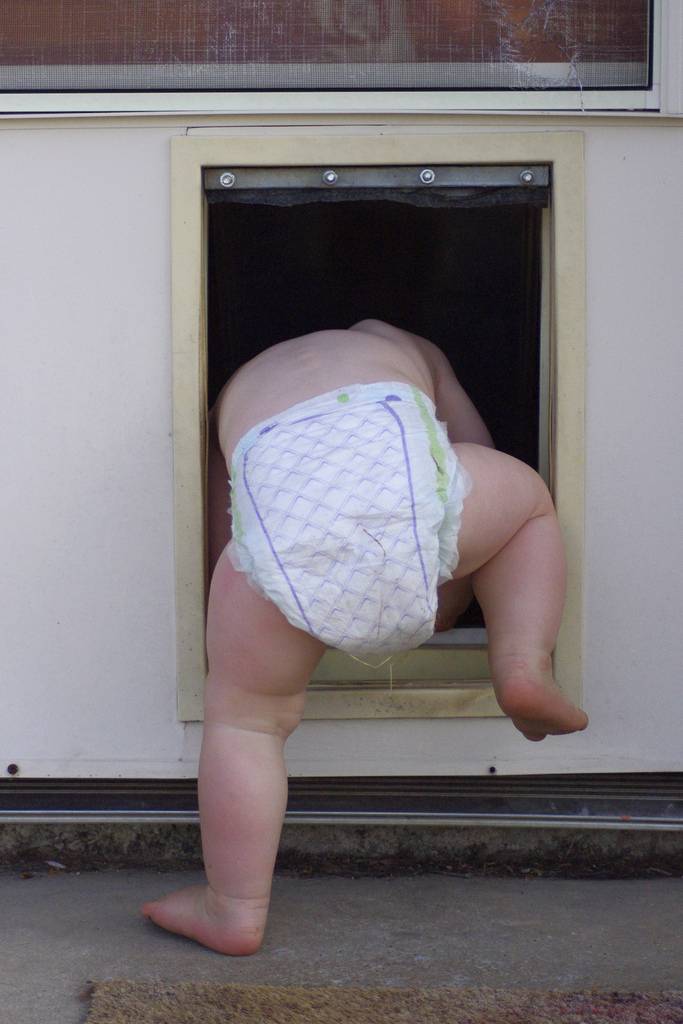Regarding safety, having a pool, pond, spa, or hot tub on your property is quite demanding. An energetic toddler or an overconfident preschooler may find these shimmering turquoise-blue waves very attractive.
One common silent cause of death in children and teenagers is drowning. This can occur in a matter of seconds or minutes. Keep your children safe in and near water by practicing toddler-friendly pool safety practices to ensure pool safety for toddlers.

Tackling the Deep End: Teaching Your Tot to Swim
The best way to keep toddlers safe around pools is to teach your child how to swim. The American Academy of Pediatrics (AAP) recommends that children learn to swim as early as one year old. Babies often don’t associate fear of water at that age.
As a result, kids who learn to swim as infants frequently don’t recall it as a horrific event. Your child’s fear reactions start to grow as they get older.
A kid who hasn’t been trained in the fundamentals of swimming before the age of 3 may already have a fear of the water, making it harder to teach them how to swim!
Overcome Your Fears!
To start teaching your toddler to swim, you should overcome your fears first. If you need to cope with your worries, do it away from your kids.
Spend some time practicing swimming basics: how to tread water in deeper areas, hold your breath underwater, open your eyes underwater, and do basic swimming strokes.

To assist you in overcoming your fears, practice positive affirmations and self-talk. Enroll in a swimming class if you still have trouble improving your confidence and abilities in and around the water.
Swimming Basics For Kids
Bath Tub Practice
You can teach your child the basics of swimming without using a pool. Your child can begin learning to swim in the bathtub. Fill the bathtub just enough so their head rests at the bottom and their ears are submerged to help them develop confidence while floating on their back.
You can increase the water’s depth as your child gains swimming proficiency. Have your toddler practice holding his breath and opening his eyes underwater while resting face-down in cool, clear water to simulate a swimming situation.
Additionally, he can try floating on his back and kicking his legs. The better your kid gets, the more frequently he will practice. He’ll quickly be able to apply what he has learned in the bathtub to any water depth once he’s ready for the pool.
Swim-Float-Swim Technique
Once your child is ready for the pool, let him try the swim-float-swim technique. Here’s how your child can learn to swim:
- Have your kid open his eyes, breathe, and dip his face into the water. His body will rise spontaneously.
- Your toddler should kick in this position while focusing on their final position.
- When he needs to breathe, he may turn his head to one side, lift his face out of the water, and use his mouth to breathe.
- Your swimmer should roll onto their back and float whenever he becomes tired. In this posture, he can rest or continue to kick.
- To maintain an eye on their target and swim more quickly to safety, your child should frequently roll back into the swimming posture.
Enroll Your Child in Swimming School
If you don’t know how to swim or are not confident teaching your toddler how to swim, enroll your child in swimming school instead. That way, you’ll be assured that your child is in good hands.

Pool Safety Measures for Toddlers
Even if your child knows how to swim, you must still practice safety measures. Here are some toddler pool safety tips to keep your kids safe from pool-related accidents
1. Secure the Pool
Even if your backyard has fences, have a climb-proof fence built around your pool by a fence contractor—keeping toddlers safe around pools guarantees that no windows or doors can let your toddler in.
Depending on local construction standards, your pool fence should be at least 4 feet high and have slats or uprights spaced no more than 3 or 4 inches apart. A childproof lock and a self-closing, self-latching gate should also be included.
Lastly, relocate any furniture close by that your little one could use to scale the fence.
2. Keep Your Baby’s Head above Water at all Times
Closely watch your child inhaling water while splashing, a common mistake made by young children, since this may result in secondary drowning, an uncommon but dangerous ailment.
Therefore, strive to keep your baby’s head above water all the time and ensure that any underwater exposure is monitored and short.
3. Install a Pool Shade
Aside from their aesthetic value, installing awnings and shade umbrellas helps reduce your kids’ sunburns when swimming, especially during the summer season. Encourage your children to take breaks for drinks and food and wear sunscreen as well.
4. Your Child should be Within Arm’s Reach
Little swimmers should always be supervised while being kept near enough to reach and touch them, as the American Academy of Pediatrics (AAP) recommends. Even after your child has completed swim lessons, maintain that closeness until he is 4.
However, children may drown at any age, so always be on guard, especially with older children.
5. Get Your Toddler a Life Vest
Water wings and inner tubes are fine if you’re in the pool with your child and keep him within reach. However, never use these inflated flotation devices or inflatables instead of a life jacket; they are not trustworthy or safe enough.
Purchase life jackets or personal flotation devices (PFDs) that have received Coast Guard approval for your child.
6. Have a Pool Alarm
Contact your local alarm provider to determine which alarm system is best for your house. You may opt for a different kind of alarm depending on your needs.
Infants and toddlers can wear wrist alarms that activate when they approach a pool or become wet. Certain alarms make a sound when a human or a large, heavy object enters the pool. Others make noise when the pool’s entrance doors or gates open.
7. Talk to Your Toddler about the Pool Rules
Explain pool rules to your children and their friends. Post them near the water, along with information on CPR and emergency phone numbers. Here are some pool rules that you can implement to prevent accidents in pool areas:
- During a thunderstorm, avoid the pool since water draws in lightning.
- If you’re sick or hurt, avoid swimming.
- If the pool doesn’t have a diving area, do not dive.
- Children must be supervised by an adult who knows how to swim when they’re in the pool area.
- Nobody should dive alone. Swimmers with little knowledge should use life jackets.
- Night swimming is allowed only if the pool is well-lit.
- Running, pushing, or rough play are prohibited around or in the pool.
- Avoid using glass or electrical devices close to the pool.
8. Assign a Watcher Each Time Your Baby Swims
Supervising toddlers in swimming pools is very important! When kids are near a pool or any body of water, there must always be an adult watcher. Young children and inexperienced swimmers should be within arm’s reach of the water watcher.
Even older kids who can swim should always be watched by adults. The person watching the water shouldn’t talk on the phone, interact with others, consume alcohol, or do any other activity that could be distracting.
Children should always be closely watched in the water, even if there’s a lifeguard on duty.
9. Learn CPR for Children
Enrolling in a CPR course for children is a good idea if you haven’t had one. Every parent has to be aware of when to perform CPR. Until medical professionals offer the patient advanced life support, CPR helps with breathing and transports blood to the heart, brain, and other organs.
Learn the warning symptoms of drowning in children as well. You probably won’t have to worry about that, but knowing what to look for might save your drowning child’s life.
10. Get Rescue Equipment
Keep life preservers and rescue gear around the pool, such as shepherd’s hooks—long poles with hooks on the ends. When going for a swim with your toddler, always keep your phone with you in case you need to contact someone for assistance.
11. Cover the Pool when not In Use
When your pool isn’t in use, seal the whole surface with a hardcover. Drain or pump any water accumulating on top since even small toddlers can drown in as little as 2 inches. Remove any pool coverings when the pool is in use to prevent your child from snagging underneath the pool cover.
Floating solar and winter covers are unsafe and may even make drowning more likely. Your tiny kid could attempt to pick up a ball or other toys that have fallen on it and rapidly slip since the floating cover makes the pool surface appear solid. These will only cause further accidents.

Make Swimming A Great Bonding Experience With Your Baby
The epitome of a carefree and fun-filled summer is a pool. Swimming is a good parent-child bonding experience.
However, when you have a swimming pool in the backyard, take the necessary pool safety precautions for toddlers and educate family members, too.


